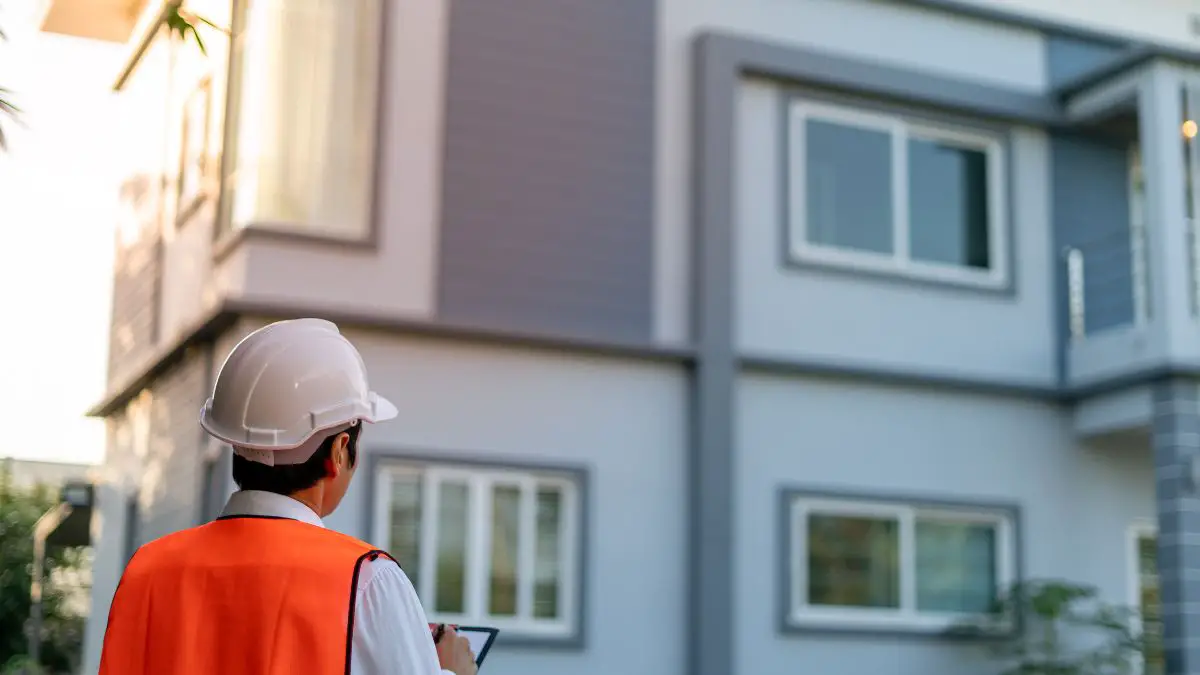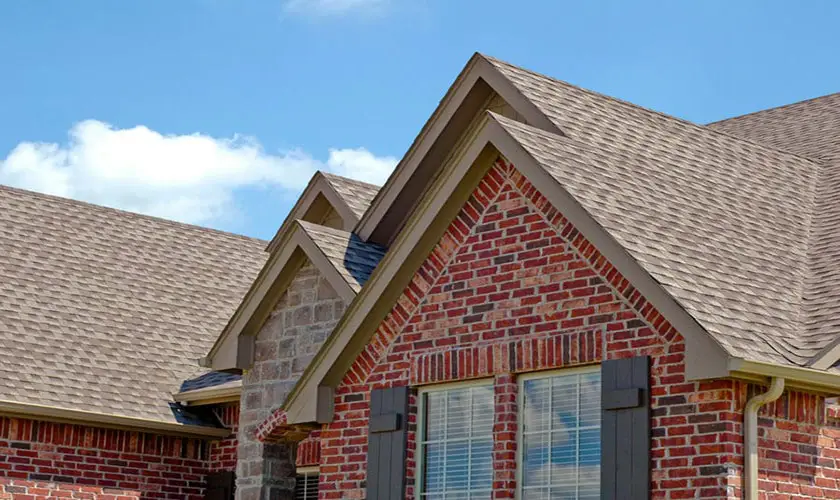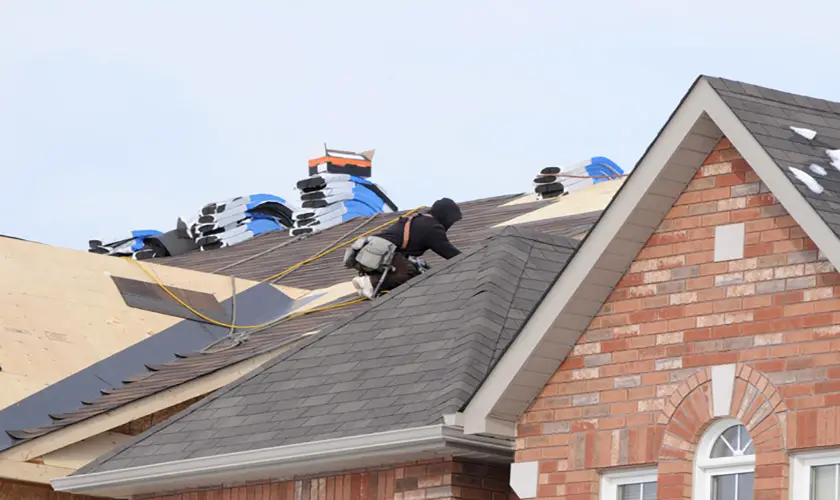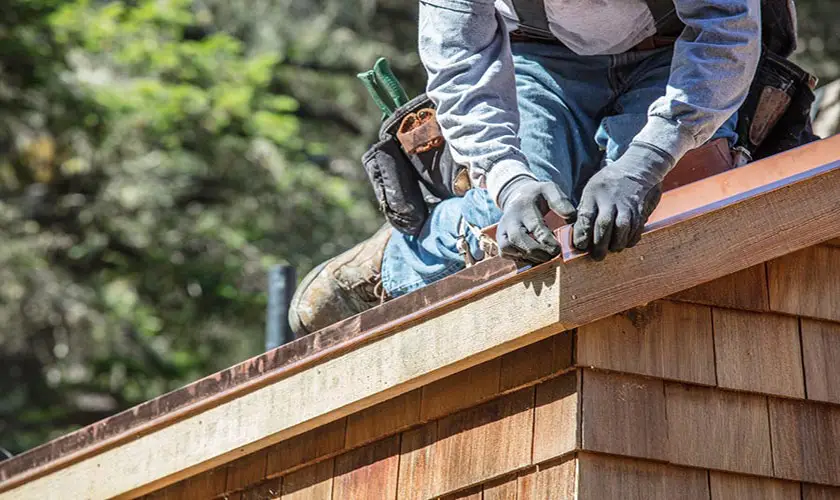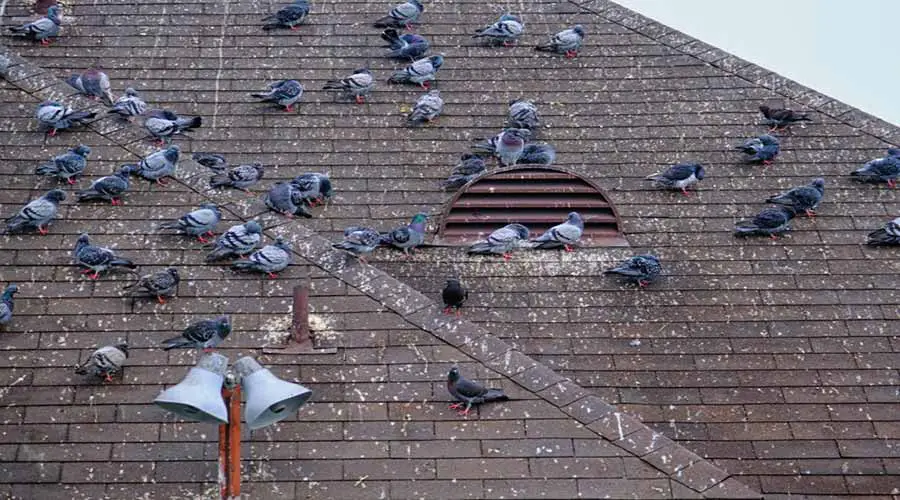
The roof remains a sensitive part of a building since it’s exposed to severe weather conditions. Because of this, it is essential to condition your roof with every option necessary for when incessant rains beat down hard. Roof flashing is one of the suggestions you’ll often hear with regards to protecting your roof. But is roof flashing necessary?
Roof flashing is necessary to avoid water damages. It is a unique roof waterproofing technique installed on roofs with specialized features such as dormers, valleys, and chimneys. It is basically arming your roof with extra protection to deal with water damage brought by leaks.
The house I live in used to have a valley flashing. And I can confirm that it really effectively collects and drains down water towards the gutters safely.
There is a lot more to know about roof flashings and how important they are for your home.
What Is Roof Flashing?
Roof flashing is a thin material that roofers install to direct water away from certain areas (walls, chimneys, roof valleys) on or near your roof.
There are many types of roof designs. Some are pretty plain and simple. Then, there are adorned ones like gable roofs profiled with unique features such as valleys and dormers.
On top of the features that some roofs (like gable roofs) come with are extra features or accessories installed on rooftops. Some of these roof features that require flashing include:
- Chimneys
- Vent pipes
- Skylights
- Roof valleys
- Dormers
- Drip edge
- Sidewalls
Roof flashing can be visible. You might have noticed a light or dark grey finish that looks like regular shingles surrounding the wall chimney to form a uniformity between the roof and the wall.
The unique purpose of roof flashing is to guide away rainwater and ice that would otherwise leak into the house through the gaps. These gaps are usually found on the edges around chimneys and dormers. Roof flashing directs water to flow systematically down the roof and into the awaiting gutters.
Even when a professional roofer skillfully installs a roof that seems perfect around the edges and corners where roof surfaces and walls meet, there is a 90% chance there are tiny unnoticeable gaps on those areas that may leak in water when it will eventually rain.
If a homeowner does not want to take that risk of finding themselves revisiting the job amidst water damage, they should finish off roofing by installing leak barriers in the form of specialized patches to gab future water leaks.
What Are Roof Flashings Made Of?
Roof flashings are typically thin pieces of material that prevent water spillage or splashing that may end up leaking through cracks on a joint to the inner parts of the roof.
Though there is rubber, plastic, and roof felt available, the best materials to use on roof flashing should be metal such as:
- Lead
- Aluminum
- Stainless steel
- Galvanized steel
- Zinc alloys
- Copper
These are better materials because metal products possess superior qualities. But other times, the incorporation of two types of material delivers an excellent finish.
An example is the use of both metal and rubber in the same roof intersection. When metal is disadvantaged, like in thermal expansion, the rubber flashing compensates for the now expanded metal flashing gap.
Metal substrates are generally safe for use as they are recycled and reused, but metals such as lead tend to be toxic to the environment.
In areas located around the peak of the roof, flashing is installed above the shingle. An example is in a chimney where base flashing covers the wall.
In areas falling on the lower parts of the roof where water flows toward the valley, flashings are installed beneath the shingles to guide water into the gutters.
Another flashing is installed on the roof’s edges that run the complete length of any exposed edge. These are called drip edge flashings and work by preventing water from flowing over and dripping from under the shingles.
Different Types Of Roof Flashings And How They Work
There are over 30 roof designs, each bearing individual special features. Some of the roof designs that need flashings are:
- A-framed roof
- Butterfly roof
- Clerestory roof
- Cross hipped roof
- Domed fault roof
- Dormer roof
- Dutch gable roof
- Hip and valley roof
- Monitor roof
Many of the roofs mentioned above bear special extra features, this feature brings along their roofing challenges, but a seasoned roofer worth his salt has a few tricks on his sleeves to tackle these challenges.
When it comes down to roof flashing, different categories of flashings that tackle the leakage problem differently are applied differently on various types of roof features.
Here is a list of popular roof flashings:
- Base flashing
- Step flashing
- Continuous flashing
- Valley flashing
- Drip edge flashing
Base Flashing
Base flashings come in L-shaped galvanized metal primers with a drip edge length between 8”-10”.
It is because a base flashing is located where the surface of the roof and the vertical surface of a wall meet. The purpose of the base flashing is to prevent water from leaking through the gaps and into the roofs’ underlayment.
Examples of these intersections are:
- Chimneys
- Sidewalls
- Dormer windows
Step Flashing
Like its name, this type of flashing is applied to a concrete wall and down a sloping roof. On each step-down, the steps on the concrete drop the flashing as well in a manner that seems like you are climbing down a staircase.
This type of flashing is applied where the base of a roof meets a sidewall to create a step-by-step trajectory.
Continuous Flashing
Unlike in step flashing, caulking is involved in keeping the flashing in place tightly. Roofing tar and mystic are regular procedures.
Many people prefer continuous flashing overstep flashing with the worry that step flashing may separate at some point while continuous flashing does not pose such a problem.
Valley Flashing
Valley flashing is a requisite of the open gap formed when two adjourned roof slopes meet.
Unlike the rest of the flashings, this one is much wider and more sensitive as it drains all the water that hits the roof every given time by directing the water towards the gutter.
Drip Edge Flashing
This one is significant as well. On the edges of either a sloping roof or a flat roof, water mostly spills over the groove of the roofing sheet and flows underneath the shingle.
The water might be little, but slowly by slowly, they damage the soffits and the fascia, and finally, they may rot, and the paint will peel off, projecting an ugly image to your roof.
Do You Need Roof Flashing?
You need roof flashing to prevent water from leaking through the roof. So much is at stake when this happens, starting from a poor outward image of your roof to an increase in energy bills resulting from damaged attic insulations.
Roof features that need flashing remain to be chimneys, chimney cricket, exhaust pipes, dormer windows, and drip edge. All these features appear where the roof is flat or sloppy; either way, the risk of water bouncing back on flat surfaces or splashing through cracks is great.
Whether the flashings are for a new roof or replacement, roof flashings should be installed properly to achieve the objective successfully.
If the image and the life of your roof mean a lot to you, then roof flashing is a must.
Why Is Roof Flashing So Important?
The biggest challenge the roof faces from nature aside from strong winds is water leaking through the rooftop or ice pooling on the roof.
When water leaks through the roof, it causes many damages to the roof, the attic walls, the ceiling, and the roof’s structure.
Roof flashing is important because of the following reasons:
- Roof flashing increases your roof’s life span
When water breaks through the roof, moisture is retained on the roof material, which encourages the growth of moss on the rooftop, which is not good for your roof’s image and life span.
- Roof flashing helps avoid moisture that ruins the roof’s overall structure
The roof’s sheathing, the wooden underlayment underneath, plus the roof’s structure made of trusses and rafters, could easily get damaged by water and moisture and eventually cave in due to rot.
- Roof flashing lessens mold growth.
In the attic, water dripping or leaking down the wall could cause mold to grow. When mold grows in an enclosed place, the air around the home becomes stale and stuffy, potentially harmful to whoever lives in that house.
- Roof flashing protects your home’s insulation.
When water trickles down the attic, the insulation therein is damaged, and its ability to cushion and condition the home is threatened.
Are Roofers Supposed To Replace Flashing?
Flashing should be replaced if there are signs of damage and brittleness. Some roofers and homeowners might choose to use roof flashings fabricated from roofing felts, plastic, and even rubber which are not created to last very long. When exposed to harsh weather conditions, they will be brittle and wear off very fast, forcing a homeowner to seek a roofer who will replace the worn-out flashings with new ones.
An important tip on roofing is investing in a quality roof flashing material equivalent to the roofing material. It ensures that every piece of material on the roof ages simultaneously to avoid replacing some materials before an entire roof replacement is due.
The best roof flashing materials are metal fabrications, especially aluminum and galvanized steel. Metal flashings do not require to be replaced as often as other roof flashing materials because they are malleable and resistant to rust and fading.
But every roofing material has its expiry date, and roof flashings are prone to damage and normal wear and tear.
The answer to the question is yes, and roofers will at some point have to replace roof flashing when they are aged, damaged or when the rest of the roof is undergoing a total roof replacement .
However, how soon you replace the roof flashing depends on the material the roof flashing is fabricated from.
Roof Flashing Maintenance
Roof flashing can be maintained by regularly inspecting it and fixing any damage as urgently as possible.
Every time a homeowner himself or a hired roof inspector climbs up the roof to do a routine check, every roof unit should be examined, including the flashings.
Like the rest of the roof, which is prone to wear and tear plus the damage brought about by high winds, the flashing is also susceptible to small damage.
Some of the damages the flashings may face are:
- Loosening of screws in cases of flashings do not incorporate caulking, e.g., step flashings. The screws are used to hold the flashing to the wall, and the roof needs regular tightening to sort out this problem.
- Corrosion eats up the fabric of a metal, same as old age. When the metal has outlived its usefulness, it tends to have small holes on the flashing material that may let in water. It will be best to fill or seal off the holes as you think of an ultimate replacement. You can seal it off by cutting off the damaged area and patching it with another piece using roofing cement or roofing tar.
- Roof flashing around the chimney is applied using a mortar, and it’s not surprising if you find the mortar has cracked in some places. Instead of having a complete replacement, you can caulk up the cracked parts and reapply the portal caulk.
Final Thought
Roof flashing is often used around areas like chimneys, skylights, vents, gutters, and other roof areas that require water runoff.
It is not always that a roofer will advise you to install water barriers on certain sections of your roof. Still, every edge of the roof, especially when roof surfaces run into the horizontal wall in the roof (e.g., chimneys), can let in water.
To eliminate this problem, a seasoned roofer who cares enough will not only advise you but will help you attach a special piece of metal between the surface of the roof and the wall to achieve a one-piece roof that is not prone to any water leakage.



